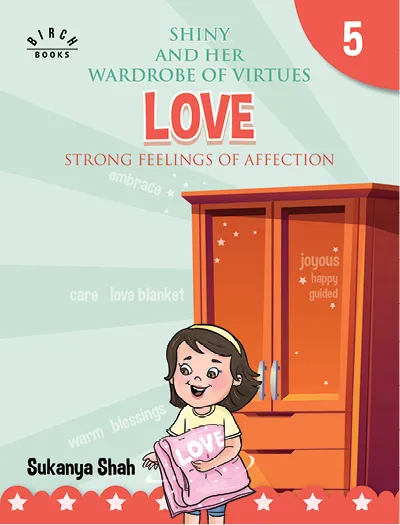Start with a strong idea, write your heart out, says children’s book author Sukanya Shah
Sukanya Shah, former editor at Condé Nast, turned author amid the pandemic as she juggled home and work. She recently released her first children’s book, in which magical items from a wardrobe help a little girl navigate through daily-life situations with virtues such as gratitude, kindness etc.
COVID-19 may have kept us homebound, but it also inspired a surge of creativity in many of us. Across the world, people took up new hobbies, focused on their fitness, and reworked their life.
For Sukanya Shah, former editor at Condé Nast, the lockdown resulted in her turning author with a children’s book, Shiny and Her Wardrobe of Virtues.
The book tells the story of a little girl called Shiny who discovers magical items from her wardrobe that help her navigate through daily-life situations with virtues such as gratitude, kindness, confidence, patience, and love.
Sukanya wrote the book last year during the COVID-19-imposed lockdown when she was trying to put in every effort to keep her three-year-old engaged.
“Cosseted in our homes during the thick of the COVID-19 pandemic, every effort to keep my toddler happy and engaged was taken. It made me wonder about that true legacy in learning our child will bequeath and undoubtedly hold her to two constants—challenge and change. Shiny And Her Wardrobe Of Virtues was born of this sentiment,” she tells YS Weekender.
What’s in Shiny’s wardrobe?
Sukanya started reading to her daughter as early as when she was just three months old. “I found myself entranced by all the wonderful stories and was full of ideas of original narratives.”
In Shiny and Her Wardrobe of Virtues, she talks about various “virtuous” items like "the ballet shoes of confidence, green coat of gratitude, raincoat of kindness and patience, a blanket of love etc”.
“This spritely little girl adorns these items that change her world view…virtues that go beyond the classroom and make her feel happy and whole. I enjoyed writing these stories of gratitude, kindness, confidence, patience, and love…but more so, I enjoyed diving into these most beautiful emotions and feelings with my child,” Sukanya reflects on her journey of writing the book.

Shiny and Her Wardrobe of Virtues
She adds, “I transcribed real-time conversations about feelings and values with my toddler into developing the narrative. The only effort I made was to ensure the narrative feels natural and not preachy! Toddlers model behaviour better than being told what to do, so I made sure I'm conscious of that.”
Since releasing her book, Sukanya has had a few readings with young children, and shares that it is heartening to see children relate to the protagonist, Shiny, and her daily struggles and triumphs.
“When I do book readings for schools, I usually pause to ask the children what they'd do and the virtue-led resolutions they find are truly a joy to hear.”
Gender-neutral parenting
Book writing for children has changed in many ways – with foremost being the importance of the right messaging. Sukanya, a mother to a girl, believes in gender-neutral parenting.
“My daughter perceives the world around her as absolutely balanced and fair, and questions anything out of the ordinary as an anomaly. For example, she asked me the other day why we refer to God as 'he',” Sukanya says.
She adds, “To me, gender-neutral parenting is not the absence of individuality but a celebration of it. If my daughter picks out a pink, sparkly dress, we celebrate that choice in the same way we do when she picks out a superhero T-shirt [which happens very often]. I am also very mindful of being neutral and inclusive in my own conduct and choices, and my daughter has been raised to believe that's just regular and the way to be...because it is."
Sukanya’s advice to aspiring writers is to start with a strong idea, write your heart out, an edit-edit-edit [preferably get an editor].
“Shortlist and write to publishers and let them help decide the age it's most suitable for and the illustration plan, if needed. What also really helped me was to put together a sort of focus group of five to 10 children in the age bracket the books were intended for and do early readings with them to gain more insight and course-correct,” Sukanya signs off.
Edited by Teja Lele









